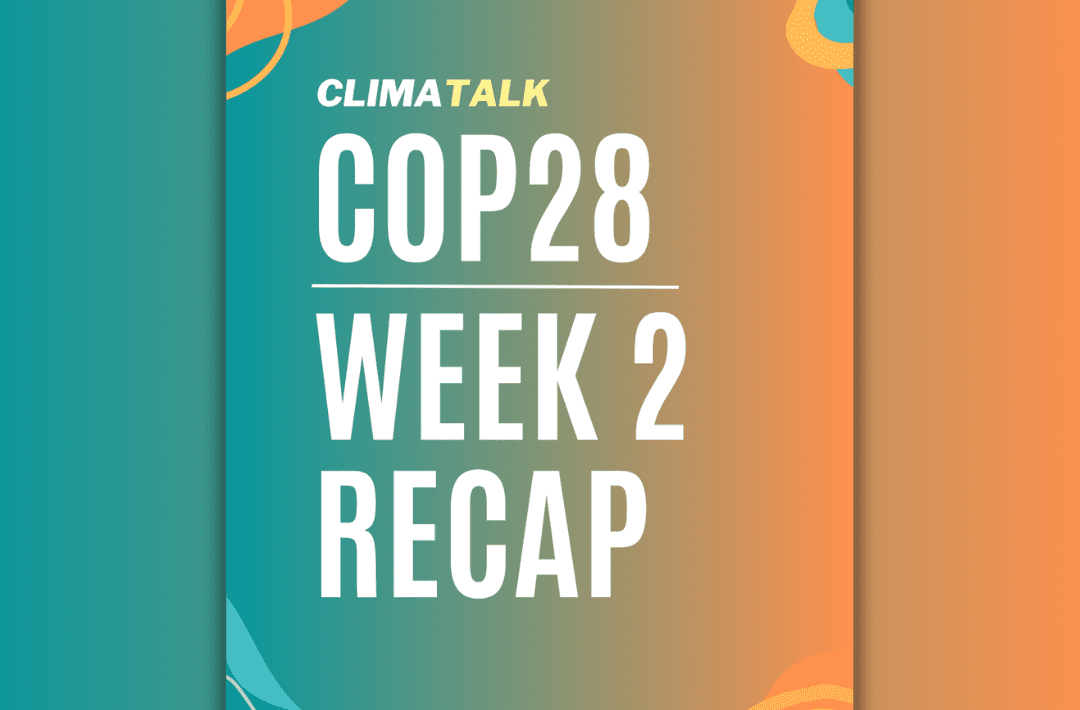
What’s in an NDC? A 2030 Outlook (Updated)
by Jack Johnson & Hannah Melville-Rea (updated in Nov 2023 by Zara Okusi)
In 2015 the landmark Paris Agreement was formed to tackle climate change. The 191 signatories committed to limit average global warming below 2°C relative to pre-industrial levels, with the ambition of remaining below 1.5°C – targets designed to avoid irreversible climate catastrophe [1, 2].
To achieve the Paris Agreement target, each country agreed to develop its own emissions reduction strategy which, under the Articles three and four of the Agreement, are known as Nationally Determined Contributions (NDCs).
What are NDCs?
NDCs set out countries’ emission reduction targets with corresponding mitigation and adaptation strategies. NDCs also include monitoring processes to ensure appropriate progress is being made. Finally, NDCs outline strategies for financing mitigation and adaptation efforts, however these details often lack sufficient clarity [3].
Submissions of NDCs
NDCs updates are submitted every five years to the United Nations Framework Convention on Climate Change (UNFCCC) secretariat with the expectation that each new round of pledges is more ambitious than the last – a process called the ‘ratcheting up’ [4]. The second round of NDCs were due in 2020, detailing country commitments in the period 2025-2030. Due to the disruption of COVID-19, the submissions deadline was delayed to 2021. All 195 Parties to the Paris Agreement have issues a first NDC; 153 updated NDCs have been issued as of 25 September 2023 [14, 15]. A lack of adequate finance, a lack of capacity and political commitment mean that NDCs vary considerably in quality and ambition [14].
Benefits of NDCs:
The primary benefit of NDCs is their bottom-up approach; countries have the freedom to develop climate strategies which suit their unique circumstances and emission reduction capacity. The flexibility of NDCs was a key reason that a global climate agreement, focused on the ambitious but scientifically necessary 1.5°C target, could be reached [6].
Additionally, NDCs outline climate commitments for the coming 5 -10 years, which is crucial given that 2020-2030 is the ‘decisive decade’ to avert the worst impacts of climate change [7]. Comparatively, other climate commitments use longer time horizons. For example, 124 of the 137 countries with net-zero targets aim for carbon neutrality by 2050 [8]. The climate however is affected by the cumulative amount of carbon pumped into the atmosphere. If emissions remain high until 2050, our carbon budget will be spent, making carbon neutrality by mid century a meaningless achievement [9]. NDCs importantly focus country commitments on climate action now.
Shortcomings of NDCs:
NDCs have two structural shortcomings which have hampered the delivery of sufficient climate commitments and action.
First, NDCs are not legally binding commitments. Without fines or sanctions, there is little pressure for countries to fulfill their own promises. This is evidenced by the fact that G20 countries are currently failing to issue appropriate plans and to even meet their set NDCs [10, 17]. Since G20 countries account for 80% of global emissions, this failure to act damages the credibility of climate commitments [11].
Secondly, NDCs are voluntary pledges meaning that the ambition of country commitments is self-determined. This gives countries the leeway to develop minimum abatement strategies. At present, even if each country took the appropriate action to fulfill their pledges, the combination of all current NDCs would only achieve 2.7°C warming [12].
The future of NDCs:
While NDCs are not the perfect method for meeting the Paris Agreement goals, they remain an important component of global climate action from two perspectives:
- NDCs require countries to develop a blueprint for climate action. This provides some indication of a country’s intentions to act. As previously discussed, pledges lose credibility given the lack of legal penalties, however the prospect of political embarrassment still pressures governments to develop climate targets which they intend to achieve. Additionally, the introduction of the Global Stocktake in 2023 will increase pressure on governments to be accountable for NDC commitments. The Global Stocktake will be taking place in this upcoming COP28, and will be decisive in reviewing countries’ NDCs. The implementation of new NDCs in 2025 therefore leaves this COP as a formative moment to make amendments before their implementation in two years’ time [16].
- Since NDCs are updated every five years, they could still deliver meaningful climate action. It is vital however that the required ambition to meet the Paris Agreement targets come in this second round of NDC pledges. Global emissions must be cut in half by 2030 to have a chance at limiting warming to 1.5°C [11]. This is the decisive decade.
Of the countries who have already released updated NDCs, Climate Action Tracker found that 65% of the new NDCs included stronger targets than in the first round [5]. This proportion must be higher if the second round of NDCs is to achieve the Paris Agreement target. As COP28 approaches, our attention will be on the countries who have not yet submitted updated NDCs and those whose current NDCs are not in line with the Paris Agreement targets.
Keep an eye on the NDC submissions through the Climate Action Tracker [13], and by following ClimaTalk’s Instagram where updates will be posted regularly.
References:
[1] Gao, Y. et al. (2017) ‘The 2°C Global Temperature Target and the Evolution of the Long-Term Goal of Addressing Climate Change – Front eh United Nations Framework Convention on Climate Change to the Paris Agreement,’ Engineering, 3(2), pp. 272-278.[2] Buis, A. (2019), ‘A Degree of Concern: Why Global Temperatures Matter,’ Nasa Global Climate Change Website, Available at: https://climate.nasa.gov/news/2865/a-degree-of-concern-why-global-temperatures-matter/ [Last accessed: 28 September 2021].
[3] ‘All About the NDCS,’ UN News, Available at: https://www.un.org/en/climatechange/all-about-ndcs [Last accessed: 30 September 2021].
[4] Yeo, S. (2015) ‘ Explainer: the ‘ratchet mechanism’ within the Paris climate deal’ Carbon Brief, Available at: https://www.carbonbrief.org/explainer-the-ratchet-mechanism-within-the-paris-climate-deal [Last accessed: 30 September 2021].
[5] ‘CAT Climate Target Update Tracker,’ Climate Action Tracker, Available at: https://climateactiontracker.org/climate-target-update-tracker/. [Last accessed: 28 September 2021].
[6] Zaman, S. (2018), ‘The bottom up pledge and review approach of nationally determined contributions (NDCs) in the Paris Agreement: A historical breakthrough or a set back in new climate governance?’ IALS Student Law Review, 5(2), pp. 3-20.
[7] Doyle, A. (2020), ‘ World faces decisive decade to fix global warming, former UN climate chief says,’ Climate Home News, Available at: https://www.climatechangenews.com/2020/02/24/world-faces-decisive-decade-fix-global-warming-former-un-climate-chief-says/, [Last accessed: 28 September 2021].
[8] Wallach, O. (2021) ‘Race to Net Zero: Carbon Neutral Goals by Country’ Visual Capitalist, Available at: https://www.visualcapitalist.com/race-to-net-zero-carbon-neutral-goals-by-country/ [Last accessed: 28 September 2021].
[9] Harvey, F. (2021) ‘ Which country has made the biggest climate commitment?’ The Guardian, Available at: https://www.theguardian.com/environment/2021/apr/23/which-country-has-made-the-biggest-climate-commitment, [Last accessed: 28 September 2021].
[10] den Elzen, M. et. al. (2019) ‘Are the G20 economies making enough progress to meet their NDC targets?’ Energy Policy, 126, pp: 238-250.
[11] Elsum, T. (2019) ‘The Decisive Decade – Our final shot at mitigating climate change’ Medium, Available at: https://medium.com/environmental-intelligence/the-decisive-decade-our-final-shot-at-mitigating-climate-change-9d34b0308ef2 [Last accessed: 28 September 2021].
[12] ‘Paris climate deal could go up in smoke without action: Guterres’ (2021) UN News, Available at: https://news.un.org/en/story/2021/09/1100242 [Last accessed: 28 September 2021].
[13] Climate Action Tracker. Available at: https://climateactiontracker.org/ [Last accessed: 01 October 2021]
[14] UN (2023). All About the NDCs. Available at: https://www.un.org/en/climatechange/all-about-ndcs#:~:text=So%20far%2C%20all%20193%20Parties,some%20cases%2C%20insufficient%20political%20commitment [Last accessed 14/11/2023].
[15] UNFCCC (2023). Nationally determined contributions under the Paris Agreement. Synthesis report by the secretariat. Available at: cma2023_12.pdf (unfccc.int).
[16] UNFCCC (n.d.). Why the Global Stocktake is Important for Climate Action this Decade. Available at: https://unfccc.int/topics/global-stocktake/about-the-global-stocktake/why-the-global-stocktake-is-important-for-climate-action-this-decade [Last accessed 14/11/2023].
[17] Oxfam (2023). G20 countreis failing by big margins to cut greenhouse gas emissions to below ‘catastrophic’ levels. Oxfam International. Available at: https://www.oxfam.org/en/press-releases/g20-countries-failing-big-margins-cut-greenhouse-gas-emissions-below-catastrophic#:~:text=Researchers%20ran%20the%20NDCs%20of,skewed%20by%20wealth%20and%20inequality [Last accessed: 15/11/2023].



